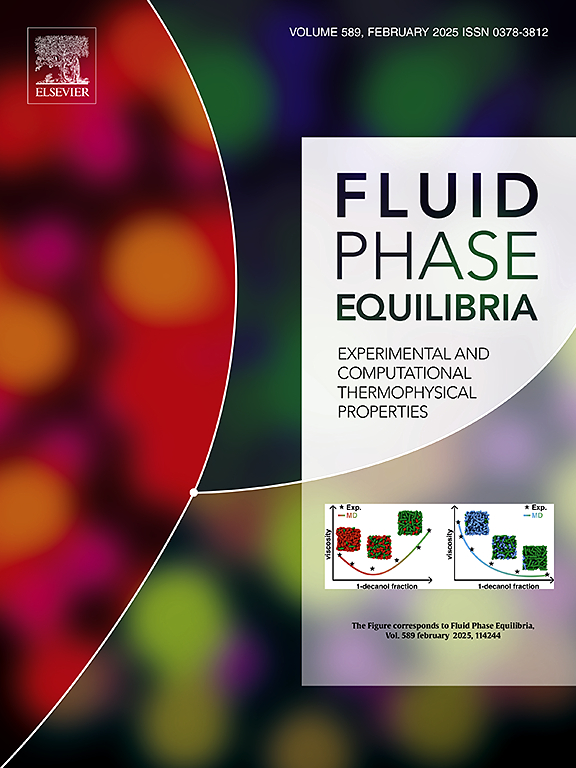Development of a new electrolyte equation of state based on Cubic Two State model
IF 2.8
3区 工程技术
Q3 CHEMISTRY, PHYSICAL
引用次数: 0
Abstract
In this study, a new electrolyte equation of state (EoS) based on the Cubic Two State (CTS) model has been developed to study the activity coefficient, solution density, Gibbs free energy of hydration, and Solid-Liquid equilibrium (SLE) calculations of strong electrolyte solutions. The primitive Mean Spherical Approximation (MSA) has been used to model the long-range electrostatic interaction between counter ions. The association interaction between ions and water has been considered using the association contribution in CTS EoS. As well, the Born solvation term has been incorporated into the electrolyte CTS (eCTS) to model the solvation of ions in water. Model parameters have been adjusted using the mean ionic activity coefficient (MIAC) and solution density data up to high temperatures. The average ARD values of MIAC, density, osmotic coefficient, and water activity have been obtained 3.9 %, 3.08 %, 4.6 %, and 3.8 %, respectively. The ion-specific parameters have been used for the prediction of the MIAC of the mixed electrolyte solution. As well, the proposed model has been utilized to predict the SLE calculations of binary salts, and the hydration energy of solvation at 298.15 K. The results demonstrate that the eCTS EoS can be used for the prediction of SLE calculations over a wide range of temperatures.

求助全文
约1分钟内获得全文
求助全文
来源期刊

Fluid Phase Equilibria
工程技术-工程:化工
CiteScore
5.30
自引率
15.40%
发文量
223
审稿时长
53 days
期刊介绍:
Fluid Phase Equilibria publishes high-quality papers dealing with experimental, theoretical, and applied research related to equilibrium and transport properties of fluids, solids, and interfaces. Subjects of interest include physical/phase and chemical equilibria; equilibrium and nonequilibrium thermophysical properties; fundamental thermodynamic relations; and stability. The systems central to the journal include pure substances and mixtures of organic and inorganic materials, including polymers, biochemicals, and surfactants with sufficient characterization of composition and purity for the results to be reproduced. Alloys are of interest only when thermodynamic studies are included, purely material studies will not be considered. In all cases, authors are expected to provide physical or chemical interpretations of the results.
Experimental research can include measurements under all conditions of temperature, pressure, and composition, including critical and supercritical. Measurements are to be associated with systems and conditions of fundamental or applied interest, and may not be only a collection of routine data, such as physical property or solubility measurements at limited pressures and temperatures close to ambient, or surfactant studies focussed strictly on micellisation or micelle structure. Papers reporting common data must be accompanied by new physical insights and/or contemporary or new theory or techniques.
 求助内容:
求助内容: 应助结果提醒方式:
应助结果提醒方式:


